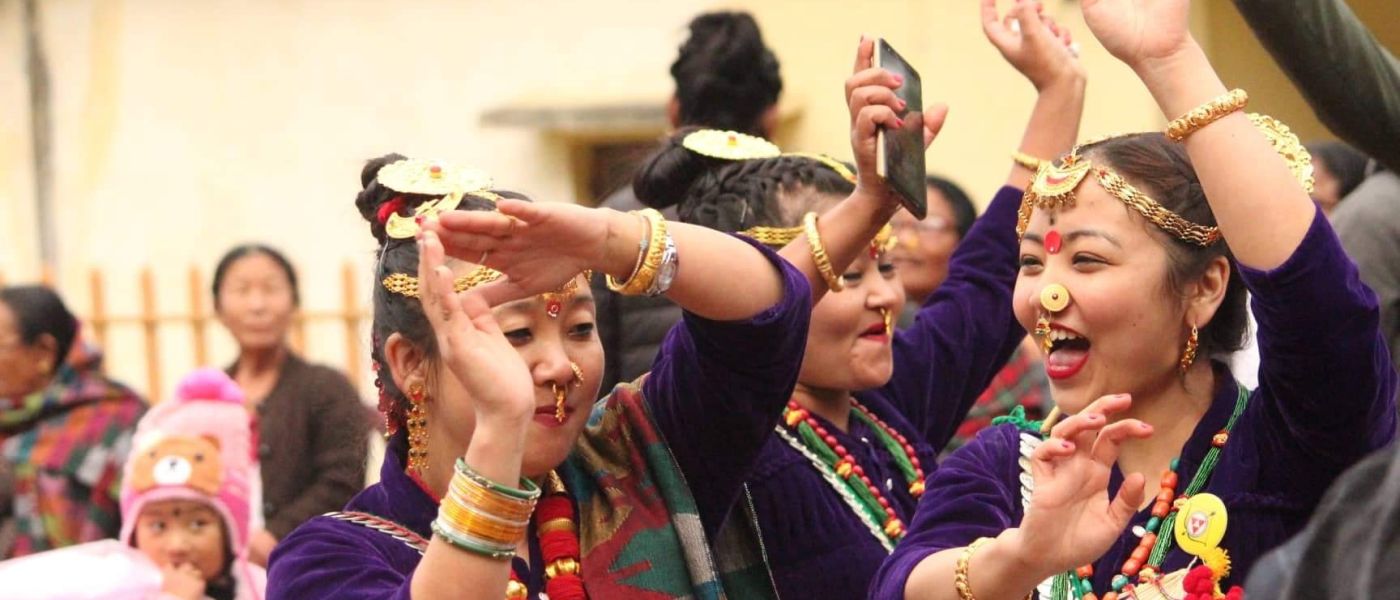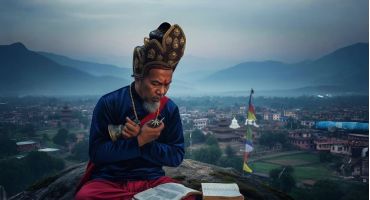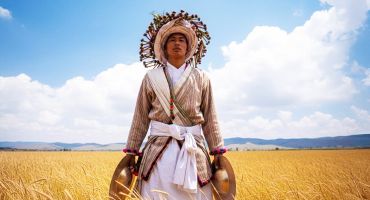Sakela is the formless, genderless divine nature spirit revered by the Khambu Rai people. As the most potent and prominent divine source since ancient times, for many Khambu Rai sub-tribes, Sakela represents a powerful spirit and a guardian of their sacred places. Sakela festival is celebrated to honor this divine spirit and a host of other guardian nature spirits. In the Khambu Rai belief system, it is hard to distinguish definitively between a ‘spirit’ and the more intangible ‘life force’ that helps animate that spirit. But in their polytheistic spirit pantheon, Sakela is the only divine entity who is distinguishably viewed as both – a guardian spirit and also a unifying life force inherent in all aspects of nature.
For the Khambu Rai people, there is no separation between religion and traditions. Their entire spiritual system is encircled and guided by an interchangeable sense of both. The worship rituals of Sakela come from Khambu traditions and Kirat religion for both are not mutually exclusive. The Khambu Rai physical world, right from the hearth to the fields and forests, is steered by the presence of nature spirits and ancestral souls, hidden and yet omnipresent. The bi-annual worship of Sakela lends expression to this nature venerating belief. Sakela rituals are not only directed at the present but also towards the future, as determinants of the growth of all sentient beings nurtured by nature. Nature worship is an integral part of religion and traditions in Kirat Rai culture.

Sakela is the name of the divine spirit and also the name of the festival where that divine spirit is worshipped. There are different nomenclatures of Sakela in different Khambu languages. The Chamling sub-tribe calls it Sakela. Bantawas call it Sakewa or Sakenwa while the Thulungs call it Toshi. Regardless of these differences in terminology, all Khambus worship Sakela twice a year.
First, during Dongwanga (Ubhauli/Ascending period) and then Dongdawa (Udhauli/Descending period). Dongwanga is observed during the rising period in spring and Dongdawa during the falling period before the coming of winter, after harvest. Sakela Dongwanga is worshipped and celebrated before the cultivation of the fields begins. Khambus pray to the divine spirit for the protection of the crops and an abundant harvest. They also ask for the protection of Hangchapok (Mankind) along with all sentient beings.
Sakela Dongdawa is observed after the harvest when crops have been reaped and stored in granaries. It is observed and celebrated to offer gratitude to the divine spirit for protecting the crops and the village. From the worship ritual to the performing of the Sili (ritualistic traditional dance), Khambus consider this a grand event of great significance. Sakela has been an integral part of Khambu Rai life and culture throughout the centuries.
Khambu Rai myth, on many occasions, describes the genesis of Sakela. Various sub-tribes transmit different stories though all share the same idea and reason behind the celebration and worship of Sakela. The elders who communicate these stories express the narrative of drawing on nature’s powers and forces to promote welfare and prosperity. While these stories invariably hint at the beginning of the agriculture age in Khambu consciousness, they also introduce ancestral forces that help maintain harmony between people and the natural environment.
For the Khambu Rai people, Sakela motivates a value system that guides conservation and also encourages connection to surroundings, and fosters socio-economic activities. It is the living memory of a people, nurtured by ancestral energies, traditions, and the pursuit of physical and spiritual well-being.
Many believe that Sakmawa was the original name for Sakewa or Sakela. Sakma means “life” and Wa means “water”. Sakmawa is water that nourishes life. Prior to the actual Sakela worship rituals, all water sources are cleaned and purified by the Sakela Shaman (Nakchhong). In the Sakela worship system, only the Shamans who have received divine guidance through dreams (Sechisenmi), whether he is the main officiant or an apprentice trainee shaman, can see the actual location of the Sakela idol. The Shaman will be able to identify the exact location through his dreams. This stone representation of the Sakela divine spirit forms the main idol in the shrine.
Over various generations, such stone idols are always unearthed at locations remote and far from human settlements. Khambu Rai people believe, therefore, that Sakela worship is willed by nature spirits and not by human desire. Known locally by many names such as Sisamlung, Longmalung, or Thungmalung, Khambus believe that this idol stone ultimately connects with the vibrational energy of the Shaman, thereby leading to Shamanic tremble and trance during the worship ritual itself. The idol is to be venerated as a manifestation of the Sakela spirit and its energy.
The Shaman who has received the divine dream leads his followers up to the location of the idol stone. Sometimes the designated stone idol is beneath the ground and has to be dug up. It is up to the people to decide the venue for Sakela celebrations. Kirat Rai culture and traditions make participation almost mandatory in a Sakela festival. Some volunteer to carry the sacred Sakela idol and some will carry the drums and cymbals. There will be people who will arrange for the necessary items required for worship rituals. This is the time for the gathering of family, friends, and neighbors (Rumipani Khimpeninampeni/Isthamitra.N).

The Shaman uses his power devices such as Solonwa (Bottle Gourd), Acheta (Rice Grains), Bechuk/Subi (Ginger) as he breaks into a Mundhumi trance as the Sakela idol is positioned upon a pre-decided conducive location. The entire procession is led by the Shaman in a grand ceremony. The procession is symbolic of a united affiliation and participation within a clan or lineage. It epitomizes collective reverence for the divine spirit and provides communal entertainment through songs, dancing, and drumming.
Sakela counters the notion of human superiority. It recognizes the equality of all beings, plants, animals, water and stones, and the spirits of the mountains and the rivers. The festival of Sakela and its collective participation reinforce human kinship with the natural world and propagate the idea that all beings are alike, often bound by the same powers, potentials, limitations, and outcomes.





[…] Kirat Khambu Rai Sakela, Sakewa Festival: Udhauli, Ubhauli (2021) Himalayan Indigenous Cultures – History, Tribal, Tradition, Festival Info – Indigenous Cultures of the Himalayas. Available at: https://himalayancultures.com/cultures/khambu-culture/kirat-khambu-rai-sakela-sakewa/ […]